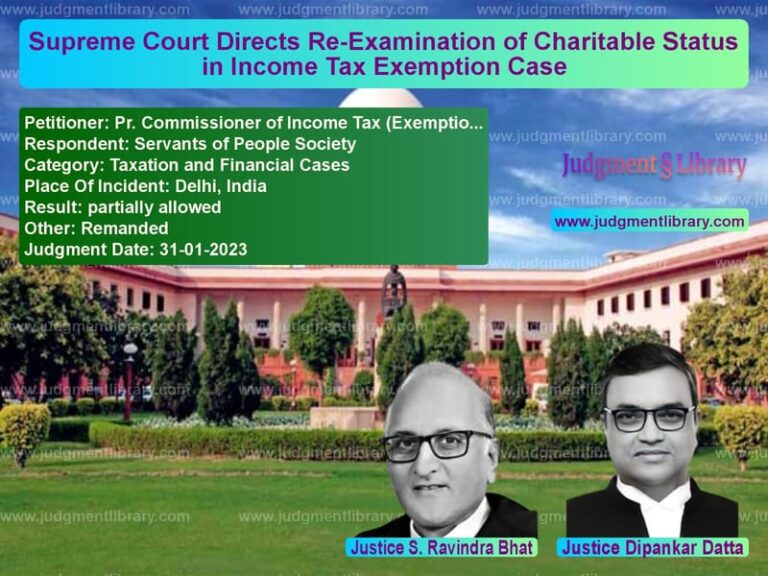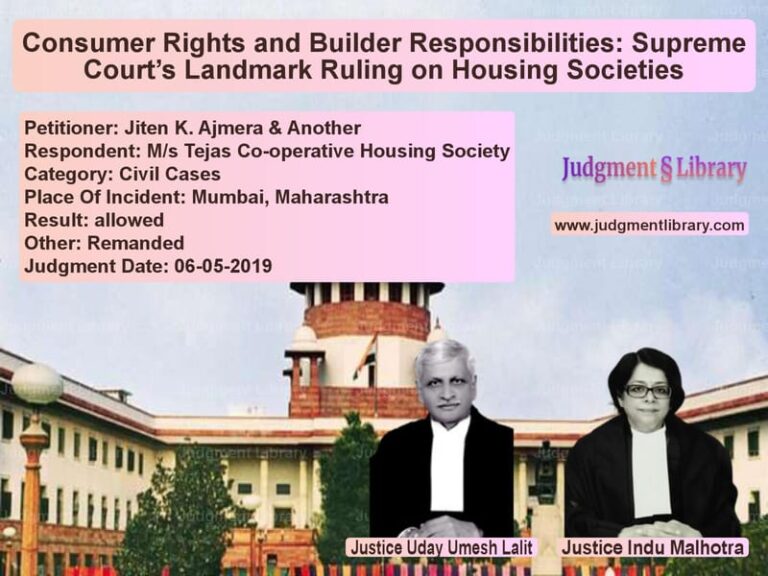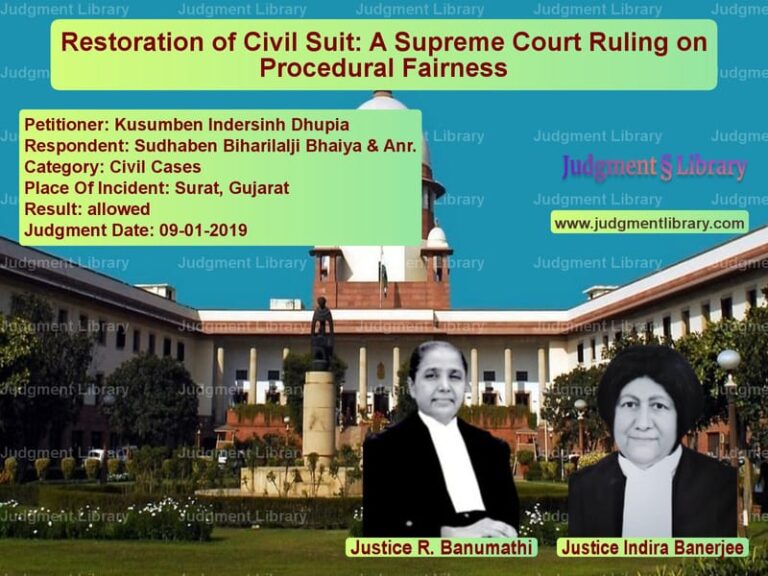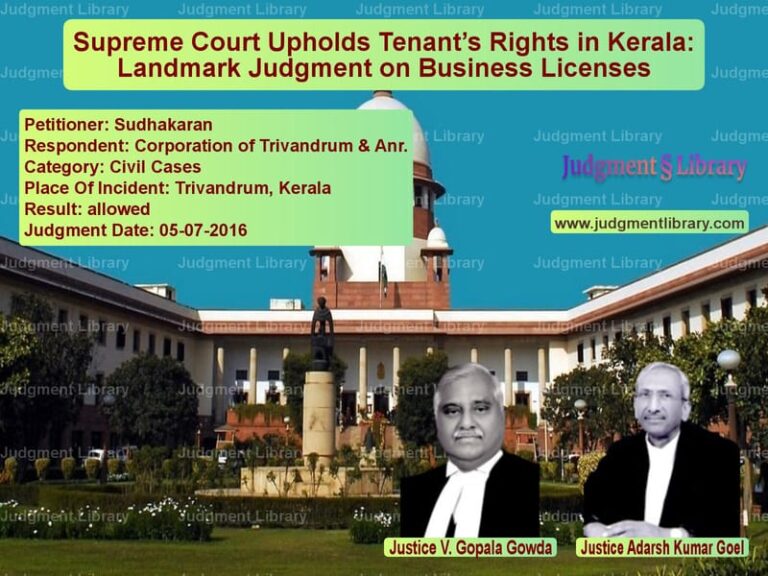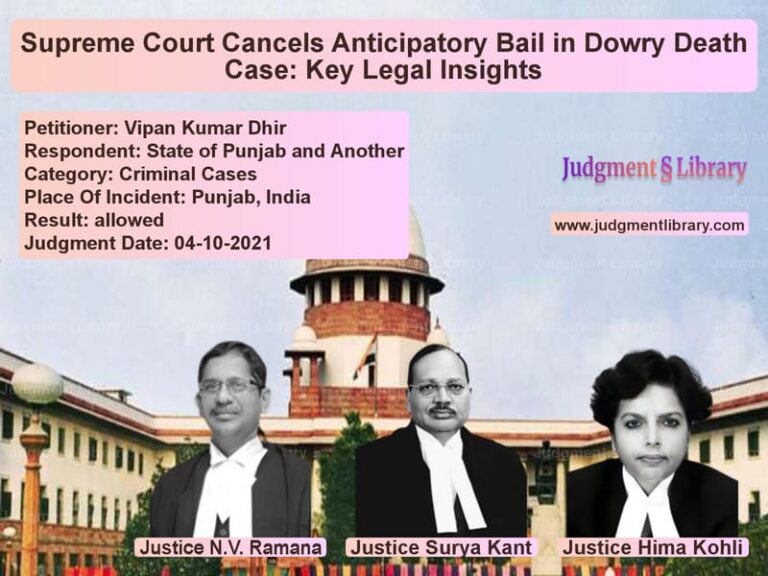Architectural Education Standards and Regulatory Approval: Supreme Court Ruling on Council of Architecture vs. TASA
The case of Council of Architecture vs. The Academic Society of Architects (TASA) & Ors. is a significant ruling concerning the regulatory authority of the Council of Architecture (COA) in prescribing minimum standards for architectural education. The Supreme Court examined whether the COA had the power to issue the ‘Minimum Standards of Architectural Education Regulations, 2017’ without prior approval from the Central Government under Section 45 of the Architects Act, 1972.
The case originated when TASA, a society representing architecture faculty members, challenged the 2017 Regulations issued by the COA, arguing that they were invalid without government approval. The Madras High Court ruled in favor of TASA, quashing the regulations. The COA then appealed to the Supreme Court, which set aside the High Court’s decision.
Background of the Case
The Council of Architecture is a statutory body established under the Architects Act, 1972, responsible for regulating architectural education and professional standards in India. The key events leading to the Supreme Court judgment are:
- In 2017, the COA issued the ‘Minimum Standards of Architectural Education Regulations’ to be followed by architecture colleges.
- TASA challenged these regulations in the Madras High Court, arguing that prior approval from the Central Government was mandatory under Section 45 of the Act.
- The High Court ruled in favor of TASA, quashing the regulations.
- Meanwhile, in 2020, the COA issued new regulations with government approval, making the legal dispute less relevant but still significant for determining the interpretation of Sections 21 and 45 of the Act.
- The COA appealed the High Court decision to the Supreme Court.
Legal Dispute Over Regulatory Powers
The primary issue before the Supreme Court was whether the COA could prescribe minimum educational standards under Section 21 of the Architects Act without seeking approval under Section 45.
Relevant Legal Provisions
- Section 21: Empowers the COA to prescribe minimum standards of architectural education for recognized qualifications.
- Section 45: States that the COA may make regulations with the approval of the Central Government.
The High Court ruled that since the 2017 Regulations were issued without government approval, they were invalid. However, the COA argued that Section 21 was an independent provision granting it authority over education standards, separate from the regulatory framework under Section 45.
Arguments Before the Supreme Court
COA’s Arguments
The COA, represented by senior counsel, argued that:
- Section 21 gives the COA independent power to prescribe minimum educational standards.
- Government approval under Section 45 is required only for formal regulations, not for educational guidelines issued under Section 21.
- The 2017 Regulations were meant to improve educational quality and did not require prior government approval.
- The High Court failed to consider that the 2020 Regulations had already superseded the 2017 Regulations.
TASA’s Arguments
TASA, the respondent, argued that:
- Any regulations affecting education standards must be approved by the government under Section 45.
- The COA had exceeded its authority by issuing the 2017 Regulations without following the required approval process.
- The High Court was correct in striking down the 2017 Regulations as they were issued without proper legal backing.
Supreme Court’s Judgment
The Supreme Court ruled in favor of the COA, setting aside the High Court’s decision. The key findings were:
- Section 21 provides the COA with independent authority to prescribe minimum standards of education.
- Government approval under Section 45 is required only for formal regulations, not for general educational guidelines.
- The High Court erred in treating the 2017 Regulations as formal regulations requiring government approval.
- The 2020 Regulations, issued with government approval, had already superseded the 2017 Regulations, making the case less relevant in practical terms.
The Supreme Court observed:
“Section 21 does not require that minimum standards of architectural education must be prescribed only through regulations under Section 45. The Council of Architecture has the authority to issue educational standards separately.”
Key Observations from the Judgment
- The COA has statutory authority under Section 21 to prescribe minimum education standards.
- The requirement of government approval applies only to formal regulations, not to all decisions made by the COA.
- The High Court failed to consider that the educational institutions themselves did not challenge the regulations—only a faculty association did.
- The Supreme Court ruling clarifies the COA’s powers and prevents unnecessary litigation over regulatory procedures.
Conclusion
This ruling is a landmark decision for regulatory autonomy in professional education. The Supreme Court clarified that the Council of Architecture has the authority to prescribe minimum educational standards without requiring government approval, provided these are not issued as formal regulations.
The judgment ensures that professional regulatory bodies retain control over educational quality while also maintaining procedural safeguards for formal regulations. This decision is likely to influence future legal interpretations of statutory authorities governing professional education in India.
Petitioner Name: Council of Architecture.Respondent Name: The Academic Society of Architects (TASA) & Ors..Judgment By: Justice V. Ramasubramanian, Justice Hemant Gupta.Place Of Incident: Madras.Judgment Date: 14-02-2022.
Don’t miss out on the full details! Download the complete judgment in PDF format below and gain valuable insights instantly!
Download Judgment: council-of-architect-vs-the-academic-society-supreme-court-of-india-judgment-dated-14-02-2022.pdf
Directly Download Judgment: Directly download this Judgment
See all petitions in Education Related Cases
See all petitions in Judgment by V. Ramasubramanian
See all petitions in Judgment by Hemant Gupta
See all petitions in allowed
See all petitions in Quashed
See all petitions in supreme court of India judgments February 2022
See all petitions in 2022 judgments
See all posts in Civil Cases Category
See all allowed petitions in Civil Cases Category
See all Dismissed petitions in Civil Cases Category
See all partially allowed petitions in Civil Cases Category


